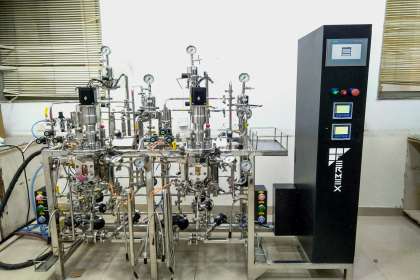
Introduction:
In the realm of biological wonders, secondary metabolites stand as nature’s hidden gems. These compounds, distinct from primary metabolites, are not directly involved in the growth or development of an organism. However, they play critical roles in ecological interactions, defense mechanisms, and even human health applications. In this article, we will explore the captivating world of secondary metabolite production and the astounding facts that make them a subject of ongoing scientific interest.
Fact 1: Diversity Abounds
The sheer diversity of secondary metabolites is mind-boggling. They are found in plants, animals, fungi, and even microorganisms, with estimates of over 200,000 unique compounds identified to date. These chemicals vary widely in structure and function, making them a rich source of pharmaceutical leads, fragrances, and flavours, among other applications.
Fact 2: Ecological Significance
Secondary metabolites play an integral role in ecological interactions, shaping the relationships between organisms. For example, certain plants produce secondary metabolites as a defense mechanism against herbivores, serving as natural insecticides or toxins. Some secondary metabolites also act as attractants, helping plants form symbiotic relationships with beneficial pollinators or seed-dispersing animals.
Fact 3: Medicinal Potential
Many secondary metabolites have demonstrated potent medicinal properties. Penicillin, the first antibiotic discovered, is a prime example of a secondary metabolite derived from the fungus Penicillium. Numerous other drugs have originated from secondary metabolites, including anti-cancer agents, painkillers, and immunosuppressant. The search for novel therapeutic compounds remains an ongoing quest in pharmaceutical research.
Fact 4: Environmental Influence
Environmental factors can significantly impact the production of secondary metabolites. Light, temperature, nutrient availability, and even the presence of other organisms can influence the synthesis of these compounds. Researchers harness this knowledge to optimize conditions for the production and yield of valuable secondary metabolites.
Fact 5: Biosynthetic Pathways Complexity
The biosynthetic pathways responsible for producing secondary metabolites are often highly intricate and involve numerous enzymatic reactions. Understanding these pathways is essential for biotechnological applications and the production of valuable compounds through synthetic biology approaches.
Fact 6: Biotechnological Potential
With advances in biotechnology, researchers have harnessed the potential of secondary metabolite production for various applications. Biotechnological methods like genetic engineering and metabolic engineering offer promising avenues to enhance the production of valuable compounds and create new variants with improved properties.
Fact 7: Role in Agriculture
Secondary metabolites play a significant role in agriculture beyond their defensive properties. Some compounds have been utilized as natural pesticides, fungicides, and growth regulators to promote crop health and productivity while minimizing environmental impacts.
Conclusion:
Secondary metabolite production represents a fascinating aspect of biology with far-reaching implications. From shaping ecological interactions to providing crucial medicinal compounds, these hidden gems have captured the attention of scientists and researchers worldwide. As we continue to unlock the secrets of secondary metabolites, we open doors to innovative biotechnological applications and a deeper understanding of the intricate web of life. Nature’s pharmacy is vast, and secondary metabolites are among its most precious offerings.
























